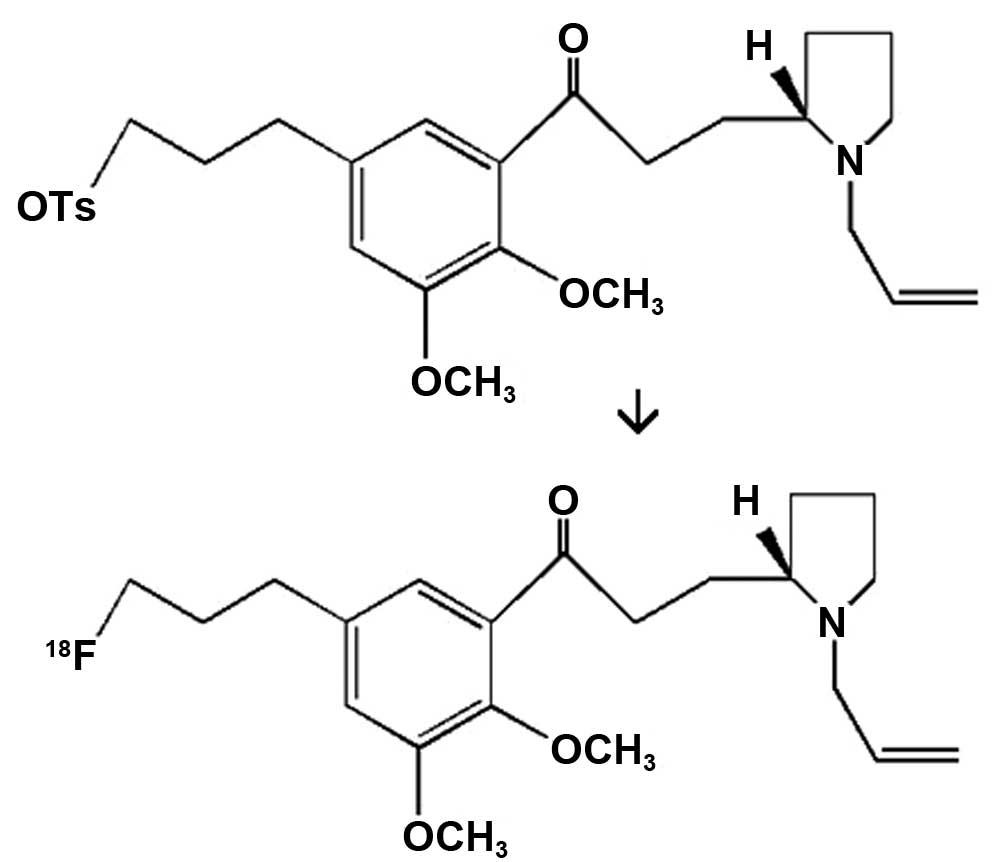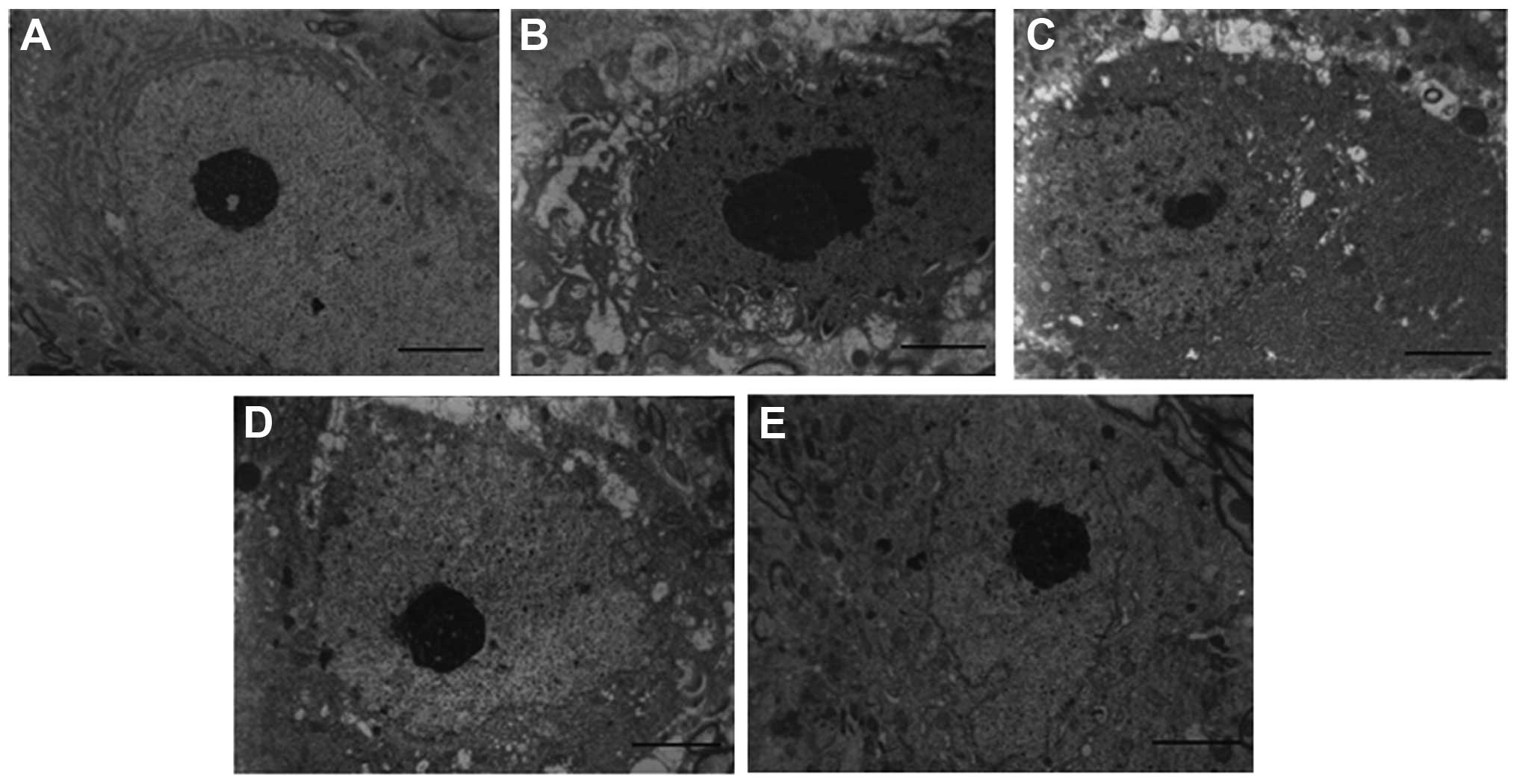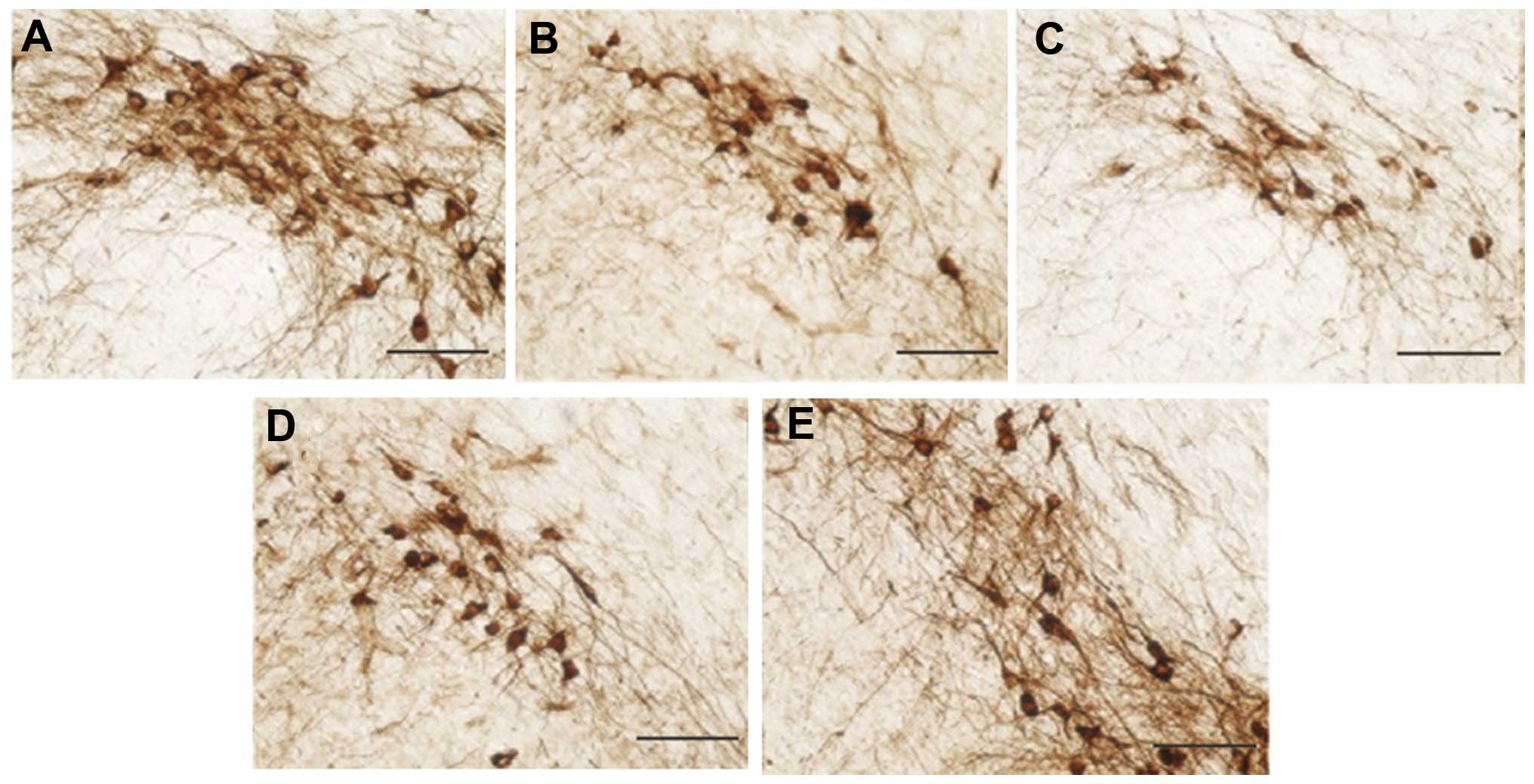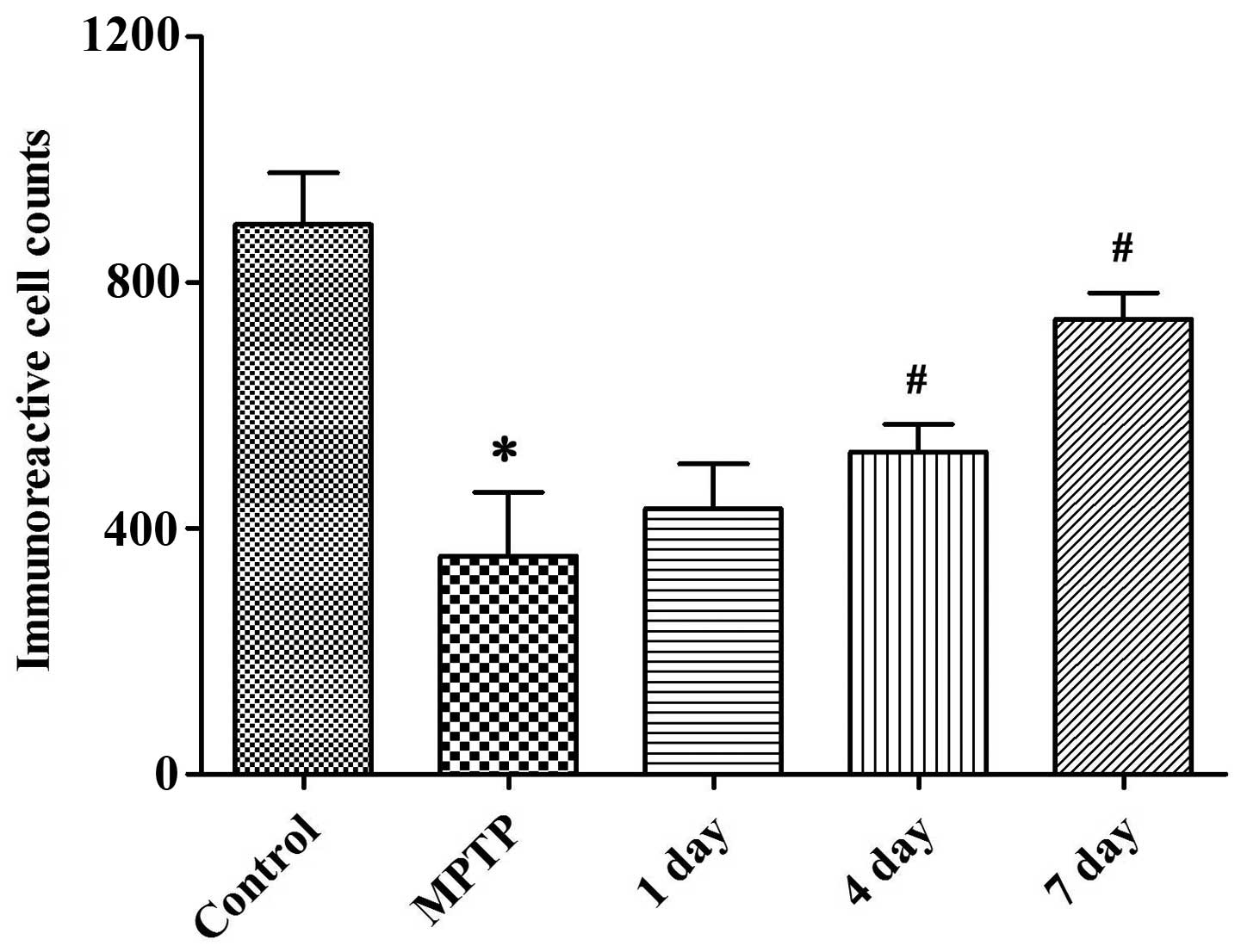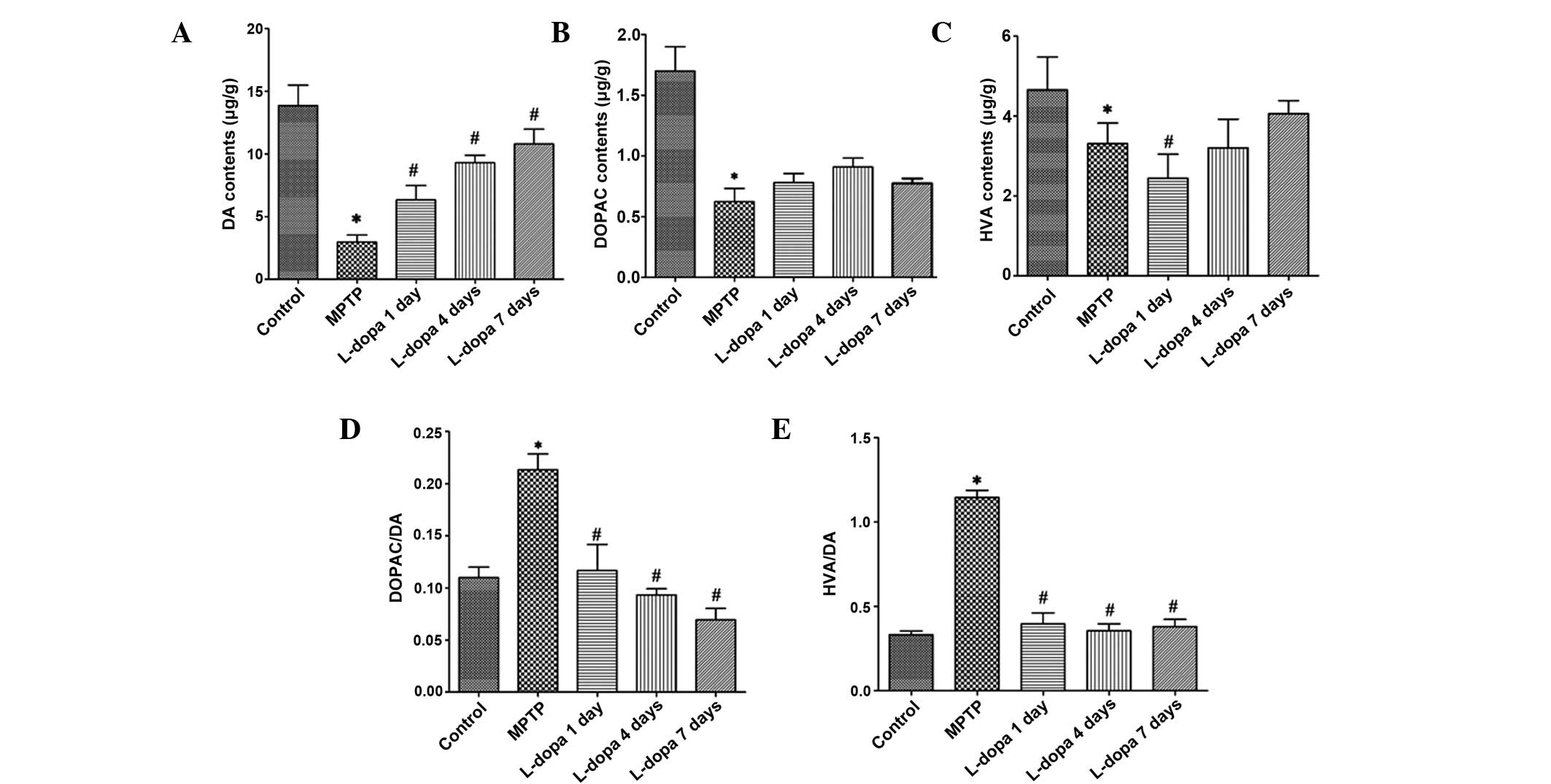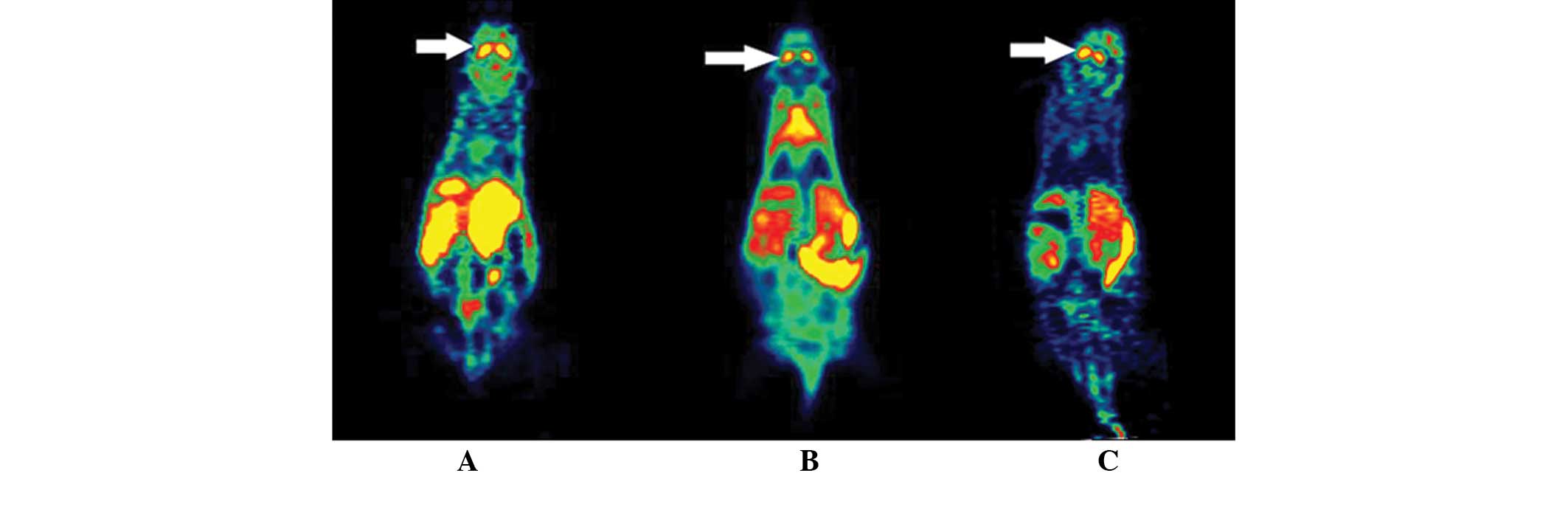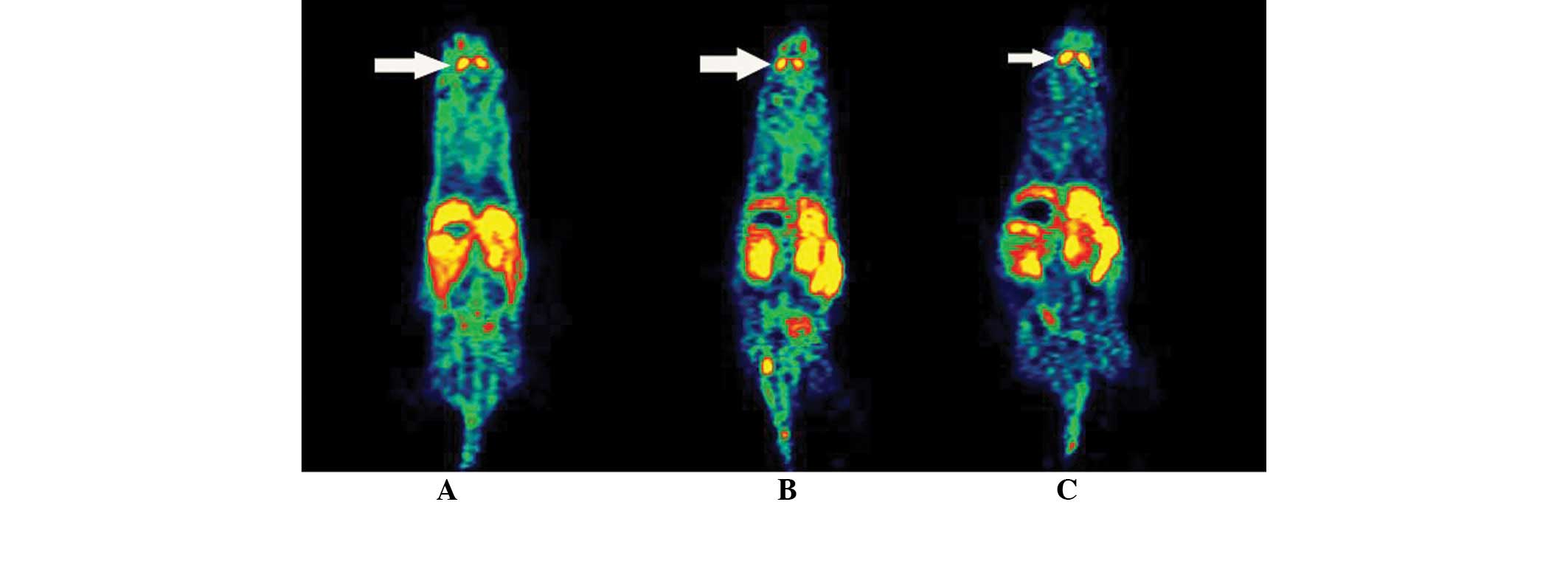|
1
|
Ma CL, Su L, Xie JJ, Long JX, Wu P and Gu
L: The prevalence and incidence of Parkinson's disease in China: A
systematic review and meta-analysis. J Neural Transm. 121:123–134.
2014. View Article : Google Scholar : PubMed/NCBI
|
|
2
|
Zhang ZX, Chen H, Chen SD, Shao M, Sun SG,
Qu QM, Zhang BR, Liu YM, Xu Q, Wan X, et al: Chinese culture
permeation in the treatment of Parkinson disease: A cross-sectional
study in four regions of China. BMC Res Notes. 7:652014. View Article : Google Scholar : PubMed/NCBI
|
|
3
|
Donnan GA, Willis GL, Kaczmarczyk SJ and
Rowe P: Motor function in the
1-methyl-4-phenyl-1,2,3,6-tetrahydropyridine-treated mouse. J
Neurol Sci. 77:185–191. 1987. View Article : Google Scholar : PubMed/NCBI
|
|
4
|
Tai Y, Chen L, Huang E, Liu C, Yang X, Qiu
P and Wang H: Protective effect of alpha-synuclein knockdown on
methamphetamine-induced neurotoxicity in dopaminergic neurons.
Neural Regen Res. 9:951–958. 2014. View Article : Google Scholar : PubMed/NCBI
|
|
5
|
Marek K, Innis R, van Dyck C, Fussell B,
Early M, Eberly S, Oakes D and Seibyl J: [123I]beta-CIT SPECT
imaging assessment of the rate of Parkinson's disease progression.
Neurology. 57:2089–2094. 2001. View Article : Google Scholar : PubMed/NCBI
|
|
6
|
Liu L, Wang Y, Li B, Jia J, Sun Z, Zhang
J, Tian J and Wang X: Evaluation of nigrostriatal damage and its
change over weeks in a rat model of Parkinson's disease: Small
animal position emission tomography studies with
[11C]β-CFT. Nucl Med Biol. 36:941–947. 2009. View Article : Google Scholar : PubMed/NCBI
|
|
7
|
Rominger A, Mille E, Zhang S, Böning G,
Förster S, Nowak S, Gildehaus FJ, Wängler B, Bartenstein P and
Cumming P: Validation of the octamouse for simultaneous
18F-Fallypride small-animal PET recording from 8 mice. J
Nucl Med. 51:1576–1583. 2010. View Article : Google Scholar : PubMed/NCBI
|
|
8
|
Tantawy MN, Jones CK, Baldwin RM, Ansari
MS, Conn PJ, Kessler RM and Peterson TE: [18F]fallypride
dopamine D2 receptor studies using delayed microPET scans and a
modified Logan plot. Nucl Med Biol. 36:931–940. 2009. View Article : Google Scholar : PubMed/NCBI
|
|
9
|
Honer M, Brühlmeier M, Missimer J,
Schubiger AP and Ametamey SM: Dynamic imaging of striatal D2
receptors in mice using Quad-HIDAC PET. J Nucl Med. 45:464–470.
2004.PubMed/NCBI
|
|
10
|
Kura AU, Ain NM, Hussein MZ, Fakurazi S
and Hussein-Al-Ali SH: Toxicity and metabolism of layered double
hydroxide intercalated with levodopa in a Parkinson's disease
model. Int J Mol Sci. 15:5916–5927. 2014. View Article : Google Scholar : PubMed/NCBI
|
|
11
|
Filipov NM, Stewart MA, Carr RL and
Sistrunk SC: Dopaminergic toxicity of the herbicide atrazine in rat
striatal slices. Toxicology. 232:68–78. 2007. View Article : Google Scholar : PubMed/NCBI
|
|
12
|
Afonso-Oramas D, Cruz-Muros I,
Castro-Hernández J, Salas-Hernández J, Barroso-Chinea P,
Garcia-Hernández S, Lanciego JL and González-Hernández T: Striatal
vessels receive phosphorylated tyrosine hydroxylase-rich
innervation from midbrain dopaminergic neurons. Front Neuroanat.
8:842014. View Article : Google Scholar : PubMed/NCBI
|
|
13
|
Li S and Pu XP: Neuroprotective effect of
kaempferol against a
1-methyl-4-phenyl-1,2,3,6-tetrahydropyridine-induced mouse model of
Parkinson's disease. Biol Pharm Bull. 34:1291–1296. 2011.
View Article : Google Scholar : PubMed/NCBI
|
|
14
|
Kawai H, Makino Y, Hirobe M and Ohta S:
Novel endogenous 1,2,3,4-tetrahydroisoquinoline derivatives: Uptake
by dopamine transporter and activity to induce parkinsonism. J
Neurochem. 70:745–751. 1998. View Article : Google Scholar : PubMed/NCBI
|
|
15
|
Ceccarini J, Vrieze E, Koole M, Muylle T,
Bormans G, Claes S and Laere KV: Optimized in vivo detection
of dopamine release using 18F-Fallypride PET. J Nucl
Med. 53:1565–1572. 2012. View Article : Google Scholar : PubMed/NCBI
|
|
16
|
Kegeles LS, Slifstein M, Xu X, Urban N,
Thompson JL, Moadel T, Harkavy-Friedman JM, Gil R, Laruelle M and
Abi-Dargham A: Stristal and extrastriatal dopamine D2/D3 receptors
in schizophrenia evaluated with [18F]fallypride PET.
Biol Psychiatry. 68:634–641. 2010. View Article : Google Scholar : PubMed/NCBI
|
|
17
|
Campo ND, Fryer TD, Hong YT, Smith R,
Brichard L, Acosta-Cabronero J, Chamberlain SR, Tait R, Izquierdo
D, Regenthal R, et al: A positron emission tomography study of
nigro-striatal dopaminergic mechanisms underlying attention:
Implications for ADHD and its treatment. Brain. 136:3252–3270.
2013. View Article : Google Scholar : PubMed/NCBI
|
|
18
|
Vučković MG, Li Q, Fisher B, Nacca A,
Leahy RM, Walsh JP, Mukherjee J, Williams C, Jakowec MW and
Petzinger GM: Exercise elevates dopamine D2 receptor in a mouse
model of Parkinson's disease: In vivo imaging with
[18F] Fallypride. Mov Disord. 25:2777–2784. 2010.
View Article : Google Scholar : PubMed/NCBI
|
|
19
|
Schmidt N and Ferger B: Neurochemical
findings in the MPTP model of Parkinson's disease. J Neural Transm.
108:1263–1282. 2001. View Article : Google Scholar : PubMed/NCBI
|
|
20
|
Bezard E, Dovero S, Bioulac B and Gross C:
Effects of different schedules of MPTP administration on
dopaminergic neurodegeneration in mice. Exp Neurol. 148:288–292.
1997. View Article : Google Scholar : PubMed/NCBI
|
|
21
|
Kuepper R, Ceccarini J, Lataster J, van Os
J, van Kroonenburgh M, van Gerven JM, Marcelis M, Van Laere K and
Henquet C: Delta-9-tetrahydrocannabinol-induced dopamine release as
a function of psychosis risk: 18F-Fallypride positron
emission tomography study. PLoS One. 8:e703782013. View Article : Google Scholar : PubMed/NCBI
|















